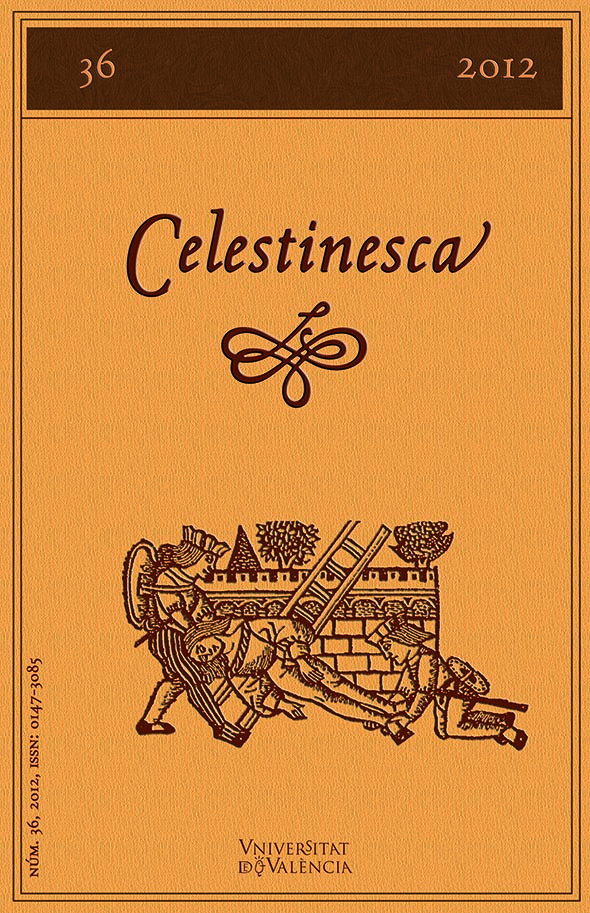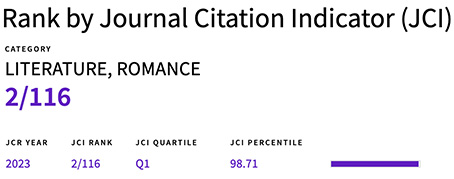«Que paresces serena»
DOI:
https://doi.org/10.7203/Celestinesca.36.20147Keywords:
Celestina, Areúsa, prostitution, bad woman, mermaid Abstract
Abstract
Our object of study —from a historical standpoint, sociological, symbolic, psychological and literary— is one of the most fantastic female characters and enigmatic late fifteenth and early sixteenth centuries: Areúsa, one of the prostitutes of La Celestina and above all a symbol of what women represent for a part of society. We try to dissect Areúsa and see which model symbolizes women for the society of the late Middle Ages and early Renaissance, from the analysis of its characterization as a literary character.
 Downloads
Downloads
Downloads
Published
How to Cite
-
Abstract392
-
PDF (Español)272
Issue
Section
License
![]() Celestinesca is committed to the dissemination of knowledge, that is why access to its contents is free and is ruled by a Creative Commons Attribution-NonCommercial-NoDerivatives 4.0 license.
Celestinesca is committed to the dissemination of knowledge, that is why access to its contents is free and is ruled by a Creative Commons Attribution-NonCommercial-NoDerivatives 4.0 license.
Authors retain the rights to their works. Therefore, they can disseminate them and deposit them in the repository, institutional or not, that they wish. However, they are kindly requested to do so by providing the full bibliographic reference and the corresponding DOI.
Celestinesca does not charge authors for submitting, processing, reviewing or publishing their articles.





